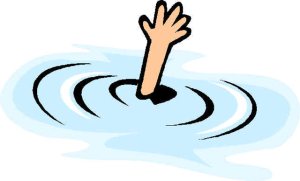I routinely ban the use of the phrase “I can’t” on the teams I coach, and instead try to teach positive self-talk, and learning different ways to express the challenges we face.
Can’t. It is one of the most self-defeating words in the language. Not only does it mean falling short of what one is trying to do, it also implies that one will not continue in the attempt. In my coaching career, “can’t” was not the wording used when someone was truly physically incapable of continuing…athletes have a whole different set of expressions when they are in that place. “I can’t” was what was used when what was really meant was “I give up”.
“I can’t” is the pressure release valve, it is the jargon to let ourselves off the hook and make the unpleasantness go away. “I can’t” is not a real state of being, but rather an attitude, and often an attitude about ourselves.
Things I hear when I hear “I can’t”:
- I quit
- I don’t want to
- I don’t know how
- I’m afraid
- Don’t make me continue
- I don’t believe in myself
- I’m giving up on myself
- Save me
We have to be careful, both about using the phrase ourselves and about how we respond when others use it. When a toddler learning to tie shoes gives up in frustration and says “I can’t!”, does the parent just do it for him? Or respond with “Let’s try again”? When an athlete backs away from a challenging training set, saying “I can’t”, does the coach take the easy route, shrug it off and turn attention to others? Or respond with a push of encouragement to keep trying?
We need to learn to hear what “I can’t” truly means. We need to hear the fear and insecurity behind that phrase, whether it is coming from ourselves or others. We need to respond with an acknowledgment of the difficulty AND a pep talk to move through it. “I can’t” needs to be transformed into “I’ll try.”
“I’ll try” does not guarantee immediate success in the endeavor, but does indicate a major change in attitude. “I’ll try” is positive, encouraging, and implies an ongoing willingness to accept and face challenges. “I’ll try” combats insecurity with small doses of confidence, and fear with the hope that at the end of the “try”, the challenge will be overcome.

